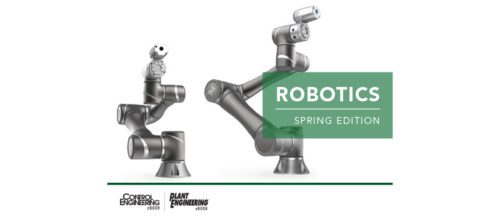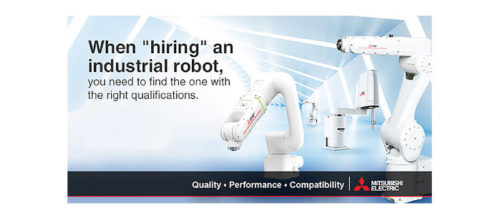Hardware, technology developments are driving the robotic revolution
Robotics and drones will be making major inroads beyond manufacturing according to IDTechEx thanks to developments in transistors, memory, sensors, energy storage, and electric motors.
The world of robotics is changing and are increasingly becoming collaborative, mobile and intelligent as they leave their confines in factories to enter more aspects of industry and daily life. This trend will have profound long-term economical and societal consequences.
The report "New Robotics and Drones 2018-2038: Technologies, Forecasts, Players" forecasts the market for robots and drones will grow from $66 billion in 2018 to more than $210 billion in 2028. Interestingly, much of these new robotics will come from new robots and drones. The report forecasts these new robots and drones will come to represent 46% of the market in 2028, up from almost zero.
Why is this happening? The answer lies in the fact that advances in hardware and software components have become better and cheaper over time, turning once fantastical robotic ideas into a real commercial opportunity. The report considers developments in price-performance ratio of hardware components to make up a new robot from five aspects: transistors, memory, sensors, energy storage, and electric motors.
The anatomy of a new robot
The schematic below shows the hardware anatomy of a new robot. Here, we have assumed a mobile robot. Its intelligence unit consists of computing elements (e.g., transistors and memory), as well as sensors. Its mobility functions include electric motors and energy storage. At a higher level, there is a supporting infrastructure such as the internet and cloud computing storage. In the remainder of this article we will consider how all of these hardware components have evolved over time. This drastic improvement in price-performance has been the wealth creation engine of our time, boosting global productivity.
Exponential growth trends are driving changes in robotics
Consider the chart in figure 2. First focus on the "computing" line. It shows the cost of computing as a function of time from around 1940 to about now divided by the cost at the initial point in the series. The unit of measurement is the cost of a device capable of calculating 1600 million instruction per second. There has been a 12 order of magnitude fall in the cost of computing, which has been accompanied with an increase in performance. This has entailed an incremental year-over-year shrinkage of the device size. This exponential growth has helped make new robotics a commercial possibility.
The unit of cost here is $/Mbit. There has also been cost reduction in hard drives, RAMs, and solid state memories. In fact, the rate of change in this industry has been so rapid that it has turned it into an academic case study for all those wishing to study the phenomena of disruption. Other technologies showing rapid cost falls include micro-electrical mechanical systems (MEMS) and other sensors. LIDAR prices will also start to fall as the transition towards improved mechanical control and solid-state versions take place.
The cost of sensing (data acquisition) and computing (data processing) have fallen dramatically over the year. The size and power consumption of these devices have also dramatically fallen. All these exponential trends have operated for multiple decades, bringing us to a point today that suddenly complex new robots (collaborative, mobile and intelligent) are becoming commercially viable.
There are two aspects of two hardware components that make up the mobility unit for mobile robots: energy storage and electric vehicles. First, consider energy storage. Here, the growth rates are limited by chemistry and are not exponential. But that is not to say they are unsubstantial.
Figure 2 shows the Li-ion batteries’ energy packing capability has grown by 3 and 2.4 times in two decades from 1991 to 2011 in Wh/Kg and Wh/L terms, respectively. This improvement has continued since and is only likely to accelerate thanks to further work on advanced and post Li-ion batteries. This is set to accelerate thanks to investments to scale up production to meet the rising demand from the electric vehicle industry. Also consider the electric motor, the unsung hero of mobile robotics.
Figure 2 shows the reduction in mass of a 5HP (3.7kW) electric motor with time relative to its mass in 1910. Electric motors now output the same power at a much smaller size and weight while also being more efficient and less expensive. These trends explain why commercializing electrically-powered mobile robots and drones is possible.
Dr. Khasha Ghaffarzadeh, research director, IDTechEx. Edited by Chris Vavra, production editor, Control Engineering, CFE Media, cvavra@cfemedia.com.
Do you have experience and expertise with the topics mentioned in this content? You should consider contributing to our CFE Media editorial team and getting the recognition you and your company deserve. Click here to start this process.



